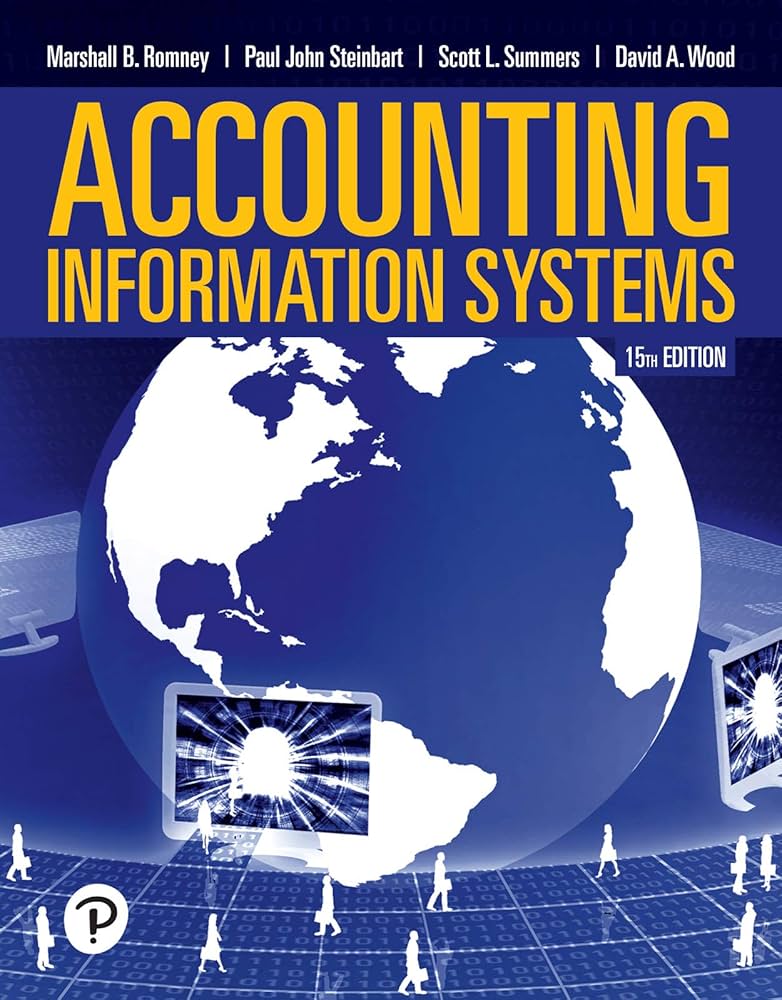Introduction
The field of accounting has been revolutionized by the use of technology in recent years. With the ever-growing amounts of financial data that need to be processed, the role of accounting information systems (AIS) has become increasingly important. One of the most well-regarded textbooks in this field is Accounting Information Systems by Marshall B. Romney and Paul J. Steinbart.
Marshall B. Romney is a professor emeritus of accounting at Brigham Young University. He has authored or co-authored many articles and several books on accounting and information systems. Romney is a member of various professional organizations, including the American Accounting Association and the Institute of Management Accountants.
Paul J. Steinbart is a professor of information systems at Arizona State University. He has published numerous articles and books on accounting information systems and is a frequent speaker at conferences and workshops. Steinbart’s research has been supported by organizations such as the National Science Foundation and the Institute of Internal Auditors.
Overview of the Book
Accounting Information Systems is a comprehensive textbook that covers both the theory and practice of AIS. It is widely used in undergraduate and graduate courses in accounting, information systems, and related fields.
The book is organized into seven parts, each covering different aspects of AIS. Part 1 provides an overview of accounting information systems and introduces the reader to the role of technology in accounting. Part 2 discusses internal control and auditing within AIS. Part 3 explores the role of AIS in financial reporting. Part 4 covers AIS in management decision making. Part 5 delves into the design and implementation of AIS. Part 6 discusses the use of AIS in different types of organizations. Lastly, Part 7 discusses emerging technologies and the future of AIS.
Key Concepts
Accounting Information Systems covers a wide range of key concepts in AIS. It starts by providing an understanding of the fundamentals of AIS, including transaction cycles, internal controls, and data modeling. It then covers the use of AIS in financial reporting, including topics such as revenue recognition, purchase and cash disbursement, and inventory management.
The book also covers advanced topics such as decision support systems, business process reengineering, and e-commerce. It discusses the design and implementation of AIS, including system development, security, and ethical considerations. Additionally, it explores emerging technologies such as blockchain, artificial intelligence, and big data analytics and their impact on AIS.
Distinctive Features of the Book
One of the unique features of Accounting Information Systems is its strong emphasis on internal controls, auditing, and ethics. The authors recognize the critical role of these aspects in ensuring the reliability and accuracy of financial information. The book also provides real-life examples and case studies that illustrate the application of AIS in various organizations.
Furthermore, the book strikes a balance between theory and practice, making it accessible to both students and professionals. It also includes chapter summaries, review questions, and hands-on exercises to reinforce key concepts.
Conclusion
Accounting Information Systems by Marshall B. Romney and Paul J. Steinbart is a comprehensive and well-written textbook that covers all the major aspects of AIS. It provides a thorough understanding of the core concepts, along with practical applications in different business environments. This book is a valuable resource for anyone looking to understand and implement AIS in their organization.




